
WatchTime’s last feature, titled “Executive Sweep”, looked at the number of top watch company executives being replaced as a result of the economic downturn. This new article focuses on a transfer of executive power of a different type altogether. At family-owned Patek Philippe, top executives do not come and go. This story is about the fourth generation, Thierry Stern, assuming the position of president. On October 15, WatchTime had an opportunity to sit down with Thierry to discuss his past, and his future.
A Family Story
TPatek Philippe traces its roots to 1839 when Antoine Norbert de Patek and François Czapek founded Patek, Czapek & Cie. In 1845 Patek joined with French watchmaker Adrien Philippe, inventor of the stem winding and setting system. In 1851, when Mr. Philippe became officially associated with the company, it was renamed Patek Philippe & Cie. The firm enjoyed great success, until the depression. In 1932, the firm was purchased by brothers Charles and Jean Stern who also owned Fabrique de Cadrans Stern Frères, Patek Philippe’s dial maker. 1932 also marked the introduction of the Calatrava line. The following year, Patek delivered the “Graves Supercomplication” to American collector Henry Graves Jr. That watch, with 24 complications, sold for $11 million in 1999 – the highest price ever paid for a watch at auction.
In 1935, Charles Stern became chairman, and his son, Henri, served as his assistant. In 1937, a pattern for training new generations was initiated when Henri was sent to the United States to learn that important market. He established the Henri Stern Watch Agency in1942. In 1958, Henri took over as president, and in 1964 Henri’s son Philippe joined the firm. Henri sent Philippe to the HSWA to learn the U.S. market from the bottom up. Two years later, Philippe returned to Switzerland to continue his education, and in 1977 he succeeded his father as president.
The Fourth Generation
Thierry Stern was 7 years old when his father became president in 1977. As a child, Thierry was allowed to look at (but not to touch) a collection of beautiful Patek Philippe pocket watches kept in his father’s desk – this was before the company established a museum. “There were 4 or 5 pieces with enamel…” Thierry recounted “…they were very nice. That is what gave me the kick to work with watches. I remember very well opening the drawer to look at them… they were beautiful. Today, they are in the museum.”
This Patek Philippe pocket watch created in 1852 features Adrien Philippe’s keyless winding system and an enamel portrait of George Washington.

By choosing to become part of the family firm at a young age, Thierry set himself along the same path traveled by his father and grandfather before him – to learn the business from the ground up. Thierry completed his business studies at the Ecole de Commerce in Geneva. Then he did something extraordinary: he enrolled in an accelerated two year program at the Watchmaking School of Geneva. Thierry says he was lucky to have a very good teacher who prepared him well. The training gave Thierry a deep understanding of watch movements. He found the training very interesting, and very challenging.
Thierry Stern at Patek Philippe headquarters in Geneva

Focus on the product was a recurring theme during my conversation with Thierry Stern. That he would devote two years to obtaining a watchmaking education reflects his level of commitment. The freedom to focus on product is rooted in the firm’s independence. Family ownership provides freedom from the demands of shareholders and quarterly profit/loss statements. Independence provides stability, and it allows each generation to devote decades to learning every aspect of their craft in a way that is perhaps unique in the watch industry today.
Focusing on product: Patek Philippe watchmaker Paul Buclin puts the finishing touches on a Star Caliber 2000 pocket watch

After learning the intricacies of watchmaking in Geneva, Thierry spent two years working closely with two German retailers where he mastered the ins and outs of selling fine timepieces. Today this experience provides Thierry with insight that is important to maintaining strong relationships with the establishments that are, for practical purposes, the face of Patek Philippe to the buying public.
Following his time in Germany, Thierry traveled to the United States, just as his father and grandfather had, to expand his understanding of the market, which Thierry acknowledges to be Patek’s most important. “The U.S. market is number one for us in terms of the number of collectors. They are very knowledgeable people. The U.S. is where you have the most watches, and also the biggest collectors. It is not that unusual here to see someone who owns 500 Pateks. It is the number one market for us, especially for collectors.” Thierry also acknowledges that his watchmaker training serves him well when interacting with collectors – it allows him to discuss movements in detail, even with the most knowledgeable aficionados.
Inside a Patek Philippe Ref. 5002 Sky Moon Tourbillon

After his return from the United States, Thierry joined Ateliers Réunis SA, the former name of the Patek case and bracelet workshops. There he learned about the manufacturing of bracelets, cases, and other components that make up the exterior of the watch. In this role, Thierry participated in the introduction of new manufacturing techniques involving computer-controlled machines. In 1998, following a posting as the market manager for Benelux (Belgium, the Netherlands and Luxembourg), Thierry returned to Geneva, where he took control of product planning until 2003.
Looking back on his training, Thierry says “I learned to fabricate the product. That is very important for me, and for Patek. I focus on the production side… I was learning the right way to make a Patek Philippe. I have to be careful. I cannot be too influenced by fashion, but I have to move on or we will not evolve. I had to learn what is possible…. If you look, it is easy to find someone who is very good on the financial side. To be able to focus on the product is not easy. It is more difficult to find someone who can understand how to make a Patek Philippe.”
Making a Patek Philippe: watchmakers at work in Geneva

Thierry says that of the many areas with which he has been involved, the creation department is his favorite. “When I was in charge of the whole creation department, it was fantastic. Every Patek Philippe that goes out has been created by the family. Creation is the dream position.”
All company presidents must have a vision for the direction of the product. At Patek Philippe, that vision extends 10 years into the future. “You have to look at it two ways – you have the design, and you have the movement. For design, you look a minimum of two years in advance. So for example, today 2010 is finished, and for 2011 I just need one more dial, and it will also be finished. So two years in advance, we know exactly what is going to happen in terms of design. In terms of the movement, we need four years to develop a simple movement. For a complicated movement, we need between six and eight years. So today, I am working on 2020. Looking forward to 2020, we know exactly what kinds of movements we’re going to create.”
The process of deciding which new watch will be introduced, and when, involves balancing several factors. “We try to think about what you as a client would like, and also what we as Patek would like to have. There are no guidelines. Of course, the movement has to be the right one for the watch. At Patek, we’re talking about 40,000 watches per year, and we produce only 28,000 mechanical movements, so I have to consider how to allocate them. We have to listen to the market and to the customers, and also to the production side. I also have to balance the markets. I have to create a watch that is right for Europe, for Asia, for America, and so on, and that is not easy.”
One new model proved to be especially challenging to create – the 5970, a perpetual calendar chronograph. “The challenge is that the old model – the 3970 – is a kind of icon. Recreating such a watch is not easy because you approach it knowing that it will be almost impossible to do better. And yet we did it. With this one, the design alone took two to three years to realize. Normally it takes 6 months. This one was very difficult.” Today Thierry is still very much involved in product design. “Nothing starts, and nothing can finish without my 100% involvement. Also, my wife is in charge of the creation department. For Patek, the product is the core of the business. If I were not involved with it anymore, it would not be Patek anymore.”
Surveying the landscape of the watch industry today, Thierry identified one trend he does not like, and one thing he would like to change. His dislike? “All of the gimmicks. Last year we saw many, many watches with a lot of useless complications. People do stupid things with the movement. It ends up very thick and not well finished. These watches do not hold their value, even the ones they sell for 500,000 francs. I don’t like that – it ruins the credibility.” The thing he would like to change? “I wish I could have more craftsmen doing enameling and engraving. We’re losing those people. I wish we had a really nice school where they could learn. To do that, you need teachers, and we do not have them. It takes 15 years of training and experience to achieve the level we need for Patek Philippe.”
Looking forward, Thierry’s primary goal as president will be to keep the company independent. “Remaining independent is the most important thing. Independence allows me to control my own destiny, and my own quality. It is very important for me to have the highest standards in terms of quality. Being independent means we can focus on the highest level of accuracy and precision in the watch.”
Being independent also has other advantages. “We can take a decision in a minute, and that is fantastic. You do what you believe is right for the product. Nobody else can tell you to change it because they think you will sell more. And you can set the right price, which means you do not overprice. You do not play with prices – that is very important to me. The watches are expensive, but that is the real price. If you look at others and compare, you will see that Patek Philippe is not that expensive compared with other brands that try to go higher than us.”
New generations usually bring change in some form. One change Thierry will make at Patek involves using technology in management. “I think if I make a change, it will be the nature of the organization. I use a computer more than my father. I receive a lot of information. I must focus on how to handle all this information, and how to store it so that it can be easily located. For me, it is important to have a very precise archive, so I emphasize new technology.”
Another area Thierry would like to improve: “After-sales service could be a little quicker. This really is a key for me, and for Patek. It is easy to say, but not so easy to realize. It requires training people. When peoples’ cars need service, they get them back in one week. They expect the same thing with their watch. So this is an area we have to improve.”
Will Patek follow others down the brand extension path? Not with Thierry at the helm. “We will focus on making the best watches and being able to do that in-house so we can control our own quality. We never needed anything else. Many others try to go into various different businesses. We do not want that. That’s why I think we have credibility – people know we are real watchmakers.”
Finally, knowing that he would not identify a particular watch as a personal favorite, I asked Thierry if he might reveal his favorite complication. His response: the minute repeater. “It looks simple, but it is very difficult, and there are no rules. Each of them is different. The beauty of the perfect sound – that is what we are all after.”


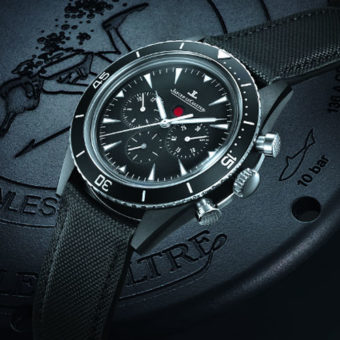
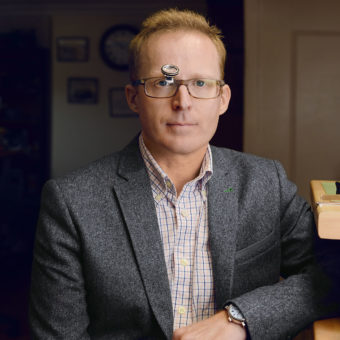
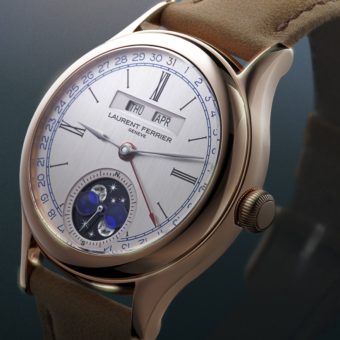
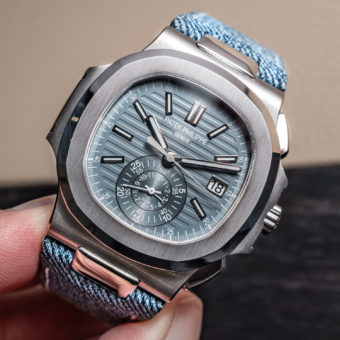
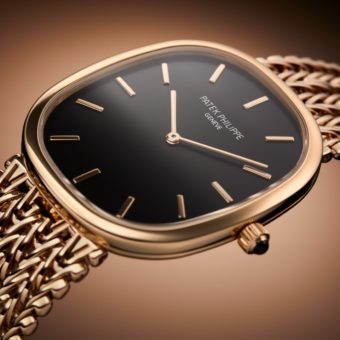
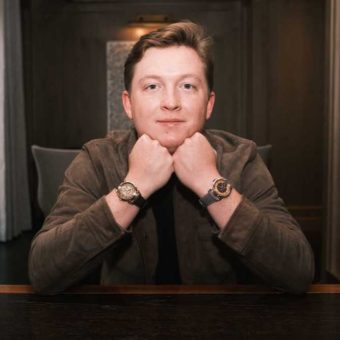
I was a classmate of Phillipe at the Ecole Nouvelle de Paudex in 1954-57. We were roommates with Donald Stevens.
I was able to see your father twice since I left. Once in 1967 or 69 and 1990. I was hoping to contact your father or at least give him my contact. I am 78 retired and live in Honolulu, HI.
Sincerely,
Bob Barry
Are the present owners of Patek Philippe Jews or were they Jewish?